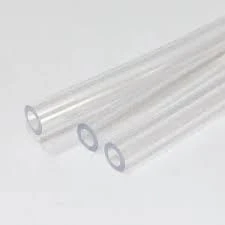ធ្នូ . 05, 2024 14:23 Back to list
ppr hot water pipe
Understanding PPR Hot Water Pipes A Comprehensive Overview
In the realm of plumbing and piping systems, materials play a crucial role in determining the efficiency, durability, and functionality of the installations. Among the various options available, Polypropylene Random Copolymer (PPR) pipes have gained prominence, particularly for transporting hot water. This article explores the characteristics, advantages, applications, and installation aspects of PPR hot water pipes.
What is PPR?
PPR, or Polypropylene Random Copolymer, is a thermoplastic polymer that is widely used in piping systems. It is known for its high resistance to temperature and pressure, making it an ideal choice for hot water applications. The random copolymer structure of PPR enhances its flexibility and makes it less prone to cracking, which is especially important in environments where temperature fluctuations can occur.
Advantages of PPR Hot Water Pipes
1. Temperature Resistance One of the standout features of PPR pipes is their ability to withstand high temperatures, making them suitable for hot water transportation. PPR hot water pipes can typically handle temperatures up to 95°C (203°F) and can endure short bursts of even higher temperatures.
2. Durability PPR pipes are exceptionally durable, boasting a lifespan of over 50 years when properly installed. Their resistance to corrosion, scaling, and chemical reactions reduces the likelihood of leaks caused by material degradation, which is a common issue with traditional metal pipes.
3. Lightweight and Easy to Handle Compared to metal pipes, PPR pipes are lightweight, allowing for easier handling and installation. This feature not only expedites the construction process but also reduces labor costs.
4. Cost-Effective The overall cost of PPR piping systems can be lower than that of traditional materials. Their longevity, coupled with the reduced need for maintenance and replacement, leads to significant cost savings over time.
5. Low Thermal Conductivity PPR pipes exhibit low thermal conductivity, which minimizes heat loss during the transportation of hot water. This characteristic enhances energy efficiency, making PPR an environmentally friendly choice.
Applications of PPR Hot Water Pipes
ppr hot water pipe

PPR hot water pipes find extensive use in various sectors
- Residential Plumbing They are commonly used in home plumbing systems for hot water supply, bathing, and heating applications, providing safe and reliable service for many years.
- Commercial Buildings PPR pipes are ideal for hospitals, hotels, and office buildings, where hot water supply systems need to function efficiently and reliably under high demand.
- Industrial Uses Industries that rely on hot water for processes such as food and beverage production, textile manufacturing, and chemical processing often utilize PPR piping due to its robustness and resistance to aggressive chemicals.
- Solar Heating Systems PPR hot water pipes are also popular in solar heating applications, given their ability to withstand high temperatures and their efficient transport of heated water.
Installation Aspects
The installation of PPR hot water pipes involves specific procedures to ensure optimal performance. The pipe joints can be fused together using heat fusion techniques, which create strong, leak-proof connections. This method eliminates the need for adhesives or mechanical fittings, thereby enhancing the integrity of the system.
It is essential to consider proper insulation for PPR pipes in applications involving hot water to further reduce heat loss and improve energy efficiency. Additionally, the pipes should be installed with a slight slope to facilitate drainage in case of maintenance or repairs.
Conclusion
PPR hot water pipes represent a modern solution in plumbing, offering numerous advantages over traditional piping materials. Their resistance to temperature, durability, and cost-effectiveness make them suitable for a wide range of applications, from residential to industrial. As the demand for reliable and efficient plumbing solutions continues to grow, PPR hot water pipes are poised to play a vital role in the future of construction and infrastructure. Understanding the properties and benefits of these pipes can help both homeowners and professionals make informed decisions that enhance the longevity and functionality of their plumbing systems.
-
HDPE Natural Sheet: Durable, Food-Grade & Versatile Plastic Solutions
NewsAug.27,2025
-
Durable Glossy PVC Rigid Sheet | Premium High-Shine Panels
NewsAug.26,2025
-
Durable PP Rigid Sheet: Lightweight, Chemical Resistant Solutions
NewsAug.21,2025
-
PVC Grey Sheet for Extraction: Chemical Resistant & Durable
NewsAug.19,2025
-
Durable PVC Pipe Fittings for Plumbing & Irrigation Needs
NewsAug.18,2025
-
HDPE Steel Belt Reinforced Spiral Corrugated Pipe | High Strength
NewsAug.17,2025

